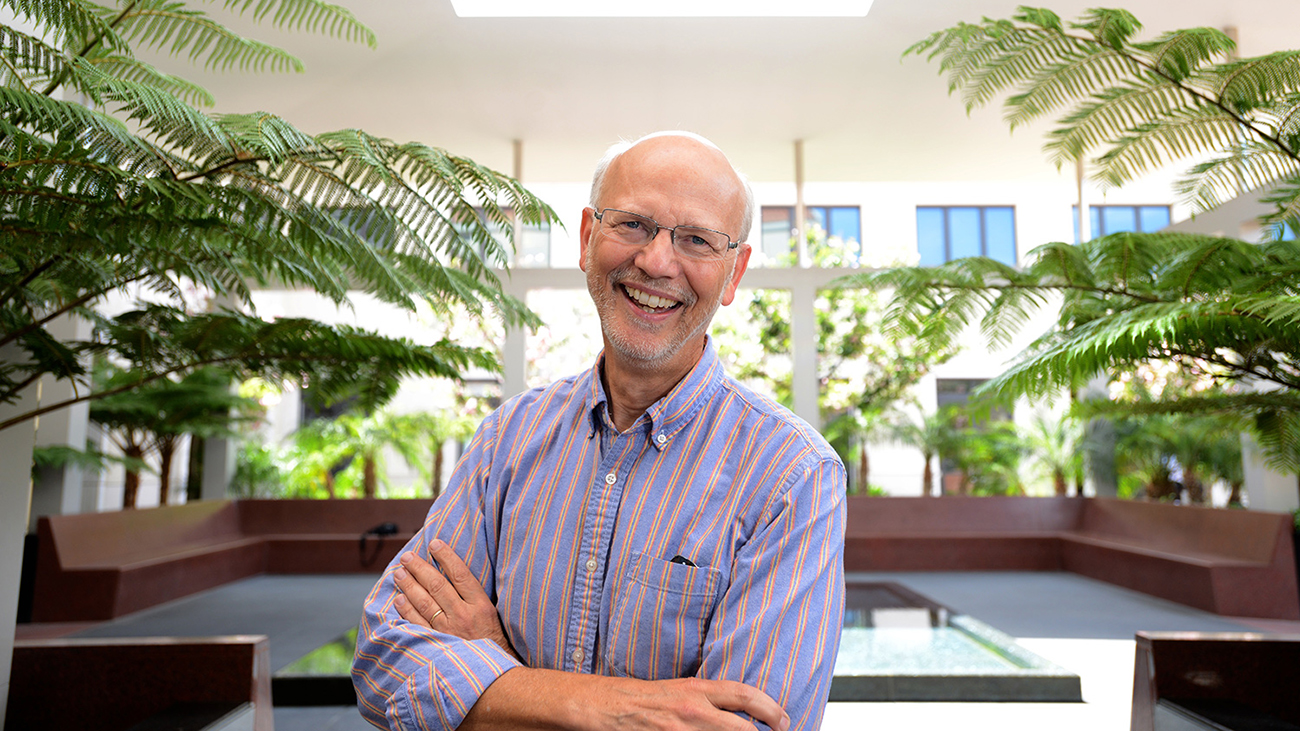- Featured
- History
- Agriculture
- Science
- Community
‘Flood and Fire, Deluge and Drought’ Lecture Set for Sept. 18 at WT
Copy by Chip Chandler, 806-651-2124, cchandler@wtamu.edu
CANYON, Texas — A renowned historian will discuss the intimate connection between the human inhabitants of a region and the mercurial nature of their environment in an upcoming lecture at West Texas A&M University.
Dr. Char Miller, the W.M. Keck Professor of Environmental Analysis and History at Pomona College and the director of the Claremont Colleges' environmental analysis program, will speak at 7 p.m. Sept. 18 in Legacy Hall in the Jack B. Kelley Student Center on WT’s Canyon campus.
Miller’s speech, “Flood and Fire, Deluge and Drought: Environmental History and Watershed Lessons from the Edwards Plateau,” is part of the Garry L. Nall Lecture Series through WT’s Center for the Study of the American West.
Admission is free. For information, call 806-651-2459.
The Edwards Plateau is a dominant landform in Texas, encompassing 24 million acres. It was intensely studied by William Bray, an early 20th-century botanist at the University of Texas, who explored the plateau and the Llano Estacado, the 30,000 square mile mesa that encompasses the majority of the Texas Panhandle.
Environmental history in Texas goes back to Walter Prescott Webb’s book “The Great Plains,” said Dr. Alex Hunt, CSAW director and WT’s Vincent/Haley Professor of Western American Studies.
“This specialization in the discipline of history teaches us that as humans we have always been involved in relationships with the natural world—land, weather, resources—and that these relationships are serious determinants of our human experience in any given region,” Hunt said.
“Here in West Texas, given its rather extreme conditions, we are more aware than most of our relationships with the natural world, but I think we still imagine ourselves more as the conquerors than the stewards of the environment,” Hunt said. “Dr. Miller’s lecture will be a very timely and relevant reminder of our relationships to our place and to the nature of our place.”
An active and award-winning scholar, Miller is also a senior fellow of the Pinchot Institute for Conservation, and a fellow of the Texas State Historical Association and of the Forest History Society.
Miller, the author of several books, has served as a consulting historian for more than a dozen documentaries and worked closely with museums in Los Angeles and San Antonio to develop exhibits and educational materials, outreach that has influenced his teaching and scholarship.
The Nall series, CSAW’s biannual signature event, was created to honor the exceptional service to WT and the scholastic accomplishments of WT Professor Emeritus of History Dr. Garry L. Nall.
The lecture series supports CSAW’s mission to promote the study of the American West. Each semester, CSAW invites a noted scholar to participate in a community lecture, classroom lecture, a question & answer discussion session, and small group outings with WT students.
Addressing regional challenges and making an impact throughout the region and beyond are key components of the University’s long-range plan, WT 125: From the Panhandle to the World.
That plan is fueled by the historic One West comprehensive fundraising campaign, which reached its initial $125 million goal 18 months after publicly launching in September 2021. The campaign’s new goal is to reach $175 million by 2025; currently, it has raised more than $170 million.
About West Texas A&M University
A Regional Research University, West Texas A&M University is redefining excellence in Canyon, Texas, on a 342-acre residential campus, as well as the Harrington Academic Hall WTAMU Amarillo Center in downtown Amarillo. Established in 1910, the University has been part of The Texas A&M University System since 1990. A Hispanic Serving Institution since 2016, WT boasts an enrollment of more than 9,000 and offers 66 undergraduate degree programs, including eight associate degrees; and 44 graduate degrees, including an integrated bachelor’s and master’s degree, a specialist degree and two doctoral degrees. WT recently earned a Carnegie Foundation classification as a Research College and University. The University also is home to the Panhandle-Plains Historical Museum, the largest history museum in the state and the home of one of the Southwest’s finest art collections. The Buffaloes are a member of the NCAA Division II Lone Star Conference and offers 16 men’s and women’s athletics programs.
About the Center for the Study of the American West
CSAW was formed in fall 2016 with a mission of fostering the study of the American West at West Texas A&M University and building bridges between the university, the Panhandle-Plains Historical Museum and the regional populace. CSAW seeks to promote the American West both as a culturally unique region and as a product of broad historical forces. For more information about CSAW and upcoming events, visit wtamu.edu/csaw.
—WT—

